#princess nicholas of greece
Explore tagged Tumblr posts
Text

Grand Duchess Elena Vladimirovna of Russia on her wedding day to Prince Nicholas of Greece and Denmark, 1902.
#Grand Duchess Elena Vladimirovna of Russia#imperial russia#imperial family#russian imperial family#romanovs#colored photography#1902#1900s#1900s fashion#russian court dress#grand duchess elena of russia#grand duchess elena vladimirovna#princess nicholas of greece#history colored#edwardian
12 notes
·
View notes
Text

The Marriage of Nicholas II, Tsar of Russia, 26th November 1894
Artist: Laurits Regner Tuxen (Danish, 1853-1927)
Date: 1895-1896
Medium: Oil on canvas
Collection: Royal Collection Trust, United Kingdom
Description
The wedding between Nicholas II and Princess Alix of Hesse took place in the Imperial Chapel of the Winter Palace on 26 November 1894, just over twenty years after the marriage of the Tsar's aunt in the same chapel. The wedding was announced in April that year and was to take place on the Empress Marie Feodorovna's birthday. Tragically, Emperor Alexander III died of kidney disease on 1 November, and the court was thrown into mourning with the exception of the day of the marriage.
The royal couple stand, holding lighted candles, whilst the Metropolitan Archbishop of St Petersburg, Mgr Palladius, makes the sign of the cross before them. Ella, (Grand Duchess Elizabeth Feodorovna), writing to her grandmother, Queen Victoria, described her sister's dress as 'embroidered silver cloth Russian court dress & very pretty', helpfully including a sketch. She added that 'Alix being tall will look perfectly lovely'. She wears a kokoshnik tiara and a small diamond crown, beneath which is a wreath of orange blossom, her imperial gold-embroidered mantle is lined with ermine. The Tsar is dressed in the uniform of a Hussar. In the background George I, King of Greece stands to the left of Christian IX, King of Denmark, who looks towards his daughter, the Dowager Empress; the Princess of Wales, and the Queen of Greece. The Prince of Wales can be seen dressed in the uniform of Russian Dragoons to the right of the portrait.
#painting#wedding#marriage#nicholas ii#tsar of russia#princess alice of hesee#imperial chapel#winter palace#royal couple#lighted candles#archbishop#embroidered silver cloth dress#russian court dress#kokoshnik tiara#diamond crown#orange blossom#imperial gold embroidered mantle#ermine#uniform of a hussar#george i king of greece#dowager empress#princess of wales#queen of greece#uniform of russian dragons#portrait#oil on canvas#artwork#fine art#russian history#danish painter
35 notes
·
View notes
Text

Princess Alice of Battenberg and Tsar Nicholas II of Russia. About 1901.
Nicholas was married to Alexandra, who was the youngest sister of Alice's mother, Victoria. Alexandra and Victoria were born Princesses of Hesse and by Rhine and granddaughters of Queen Victoria via her second daughter, Alice.
In 1903 Alice would marry Prince Andrew of Greece and Denmark, a cousin of Nicholas' and her last born child would become Prince Philip, Duke of Edinburgh, the husband of Queen Elizabeth II. Alice was the grandmother of King Charles III.
Though congenitally deaf, Alice learned to read lips and speak English and German, and also later Greek, the language of her new homeland.
#russian royalty#royalty#romanovs#history#imperial russia#british royalty#german royalty#tsar nicholas ii#russian history#royal women#Princess Alice of Battenberg#Princess Andrew of Greece and Denmark#Princess Alice of Greece and Denmark#Greek Royalty
26 notes
·
View notes
Text

⋆ ˚。⋆୨♡୧⋆ ˚。⋆
King George I of Greece, Prince Nicholas , Prince Constantine, Princess Alexandra, Prince George and Queen Olga in 1877. Garden scene painted on backdrop. 🫶
#🥹😻#king george i of greece#queen olga#prince nicholas#prince constantine#princess alexandra#prince george#greek royal family#greek royalty#house of glücksburg#glücksburg#old royal#old royal photos#royal#royals#vintage photo#1870s#19th century
29 notes
·
View notes
Text

Grand Duchess Elena Vladimirovna of Russia, later Princess Nicholas of Greece and Denmark
Greek vintage postcard
#ephemera#photography#vintage#briefkaart#grand duchess#elena#nicholas#carte postale#postcard#photo#later#greece#vladimirovna#sepia#ansichtskarte#duchess#greek#grand#postkarte#postkaart#russia#elena vladimirovna#princess#postal#denmark#tarjeta#historic
9 notes
·
View notes
Text
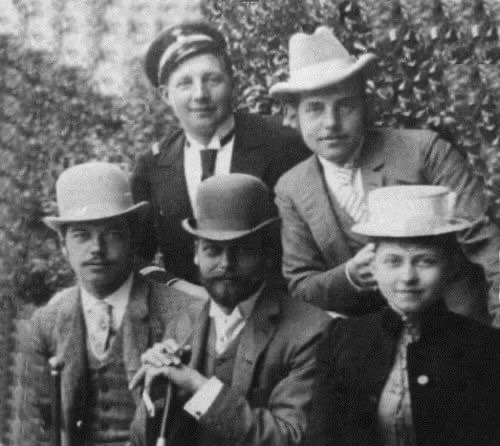
Tsesarevich Nicholas, Prince George of Wales, Princess Sophia of Prussia, Crown Prince Constantine of Greece and Prince George of Greece and Denmark 1890s.
#Tsesarevich Nicholas#prince george of wales#Princess Sophia of Prussia#crown Prince Constantine#George of Greece and Denmark#nicholas ii#George v#Queen sophia of Greece#Constantine i#1890s
38 notes
·
View notes
Text
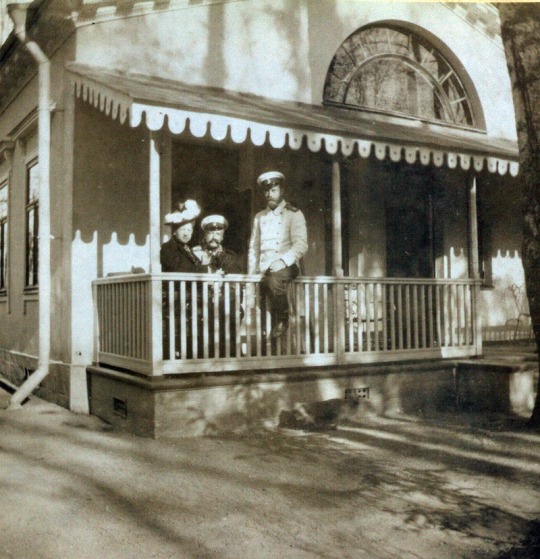
Nicholas II with Princess Maria of Greece and Grand Duke George Milhailovich.
#princess maria of greece#greece#tsar nicholas ii#grand duke george mikhailovich#tsar#my own#grand duke
22 notes
·
View notes
Text
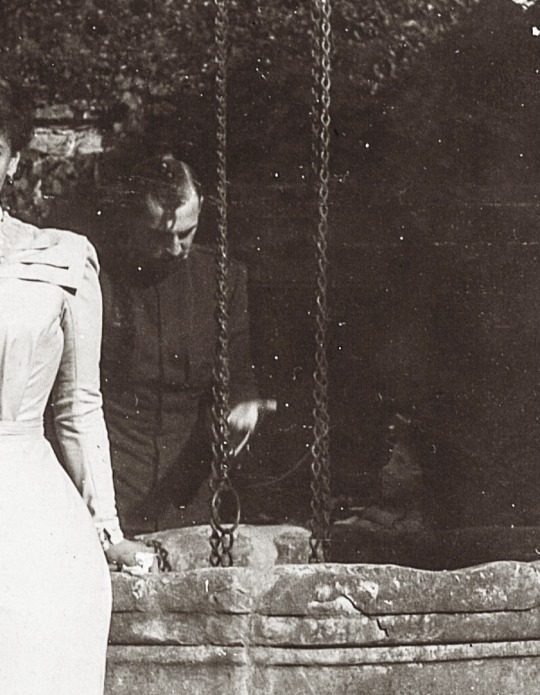
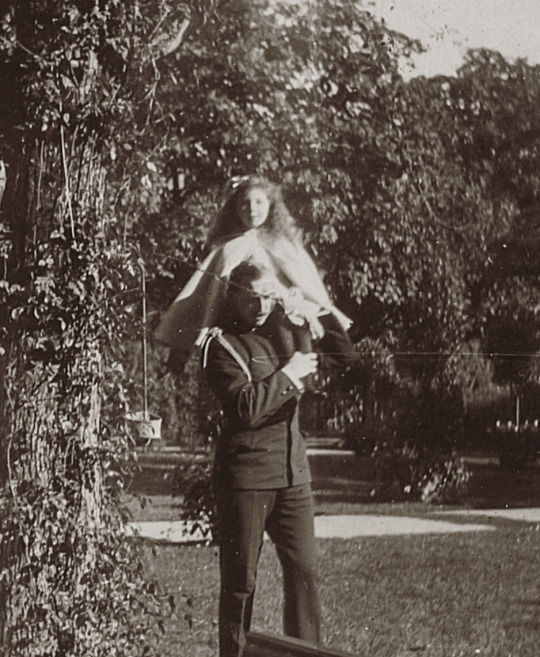
Candid moments between Prince Nicholas of Greece and Denmark aka “Greek Nicky” with his 1st cousin once removed, Princess Elisabeth “Ella” of Hesse, Wolfsgarten, Darmstadt, 1899
#awe cuties 🥰#✨😍🤍#prince nicholas of greece and denmark#prince Nicholas#greek royal family#princess elisabeth of hesse#ella of hesse#elisabeth of hesse#hessian royal family#hesse#wolfsgarten#1899#Nicholas of Greece and Denmark#greek Nicky#danish royal family
22 notes
·
View notes
Text

Rare photo of the 5 eldest children of King George I of Greece and Grand Duchess Olga Konstantinovna of Russia, 1880(?)
from left to right: George, Marie “Minnie”, Constantine, Nicholas, and Alexandra
#greek royal family#king Constantine i#king Constantine I of greece#prince george#prince George of Greece and Denmark#princess Alexandra of Greece and Denmark#Alexandra georgievna#prince Nicholas of Greece and Denmark#Princess Marie of Greece and Denmark#maria georgievna#1880#1880s#1870s
5 notes
·
View notes
Text
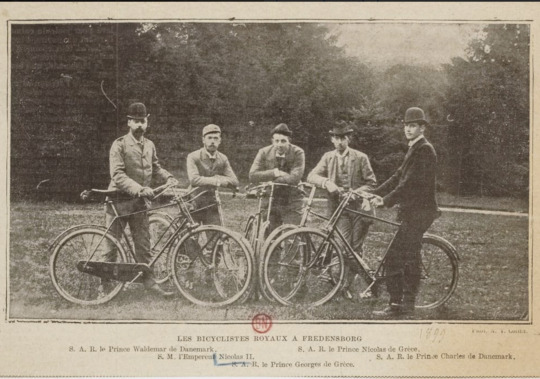
THE BICYCLE WAS ALL THE RAGE, SO THE ROYALS HAD TO GET INTO CYCLING
On the photo above, from left to right: Prince Valdemar of Denmark, Emperor Nicholas II, “Greek Georgie” (Prince George of Greece), “Greek Nicky” (Prince Nicholas of Greece) and Prince Christopher of Denmark. These guys really dressed up to go riding…neck tie, hat…
On the photo below, from left to right, Grand Duke Mikhail Alexandrovich…the jock of the group as usual, notice the handle of his bike; Cousin Victoria of Wales with an incredibly small waist, Queen Maud and her handsome and intelligent husband Hakoon VII.
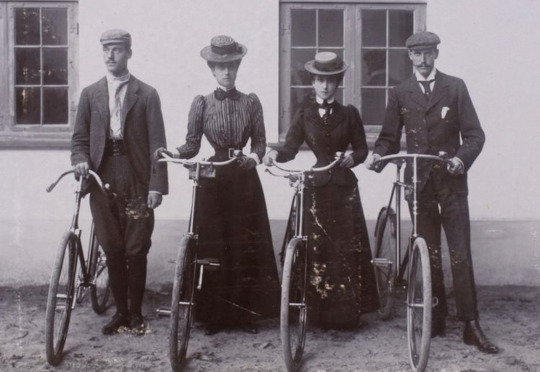
#russian history#imperial russia#nicholas ii#vintage photography#prince nicholas of greece and denmark#prince george of greece#Grand Duke Mikhail Alexandrovich#Princess Victoria of Wales#Queen Maud of Norway#King Haakon VII of Norway#prince Charles of denmark
17 notes
·
View notes
Text
George and Marina: Duke and Duchess of Kent by Christopher Warwick #HouseofWindsor #Audiobook #BookReview
The #AudiblePlus catalog had a few books on the #royalfamily that I had to check out. One was about the #DukeandDuchessofKent, #QueenElizabethII aunt and uncle. #PrinceGeorge and #PrincessMarina both came from royal houses. #Audiobook #BookReview
For eight brief years, before he was tragically killed in a mysterious air crash during the Second World War, Prince George, Duke of Kent, son of King George V and Queen Mary, and his beautiful wife, Princess Marina of Greece and Denmark, were the British monarchy’s, indeed, high society’s, most glamorous royal couple; and as golden royal icons they are still remembered.As a young man,…

View On WordPress
#Abdication#Abdication Crisis#Albert Bridge Books#Duchess of Kent#Duke and Duchess of Kent#Duke of Kent#George and Marina#Grand Duchess Yelena Vladimirovna#House of Windsor#King Edward VIII#King George V#King George VI#Prince Edward#Prince George#Prince Nicholas of Greece#Prince of Wales#Princess Marina#Princess Marina of Greece and Denmark#Queen Elizabeth#Queen Mary#Tantor Audio
2 notes
·
View notes
Text
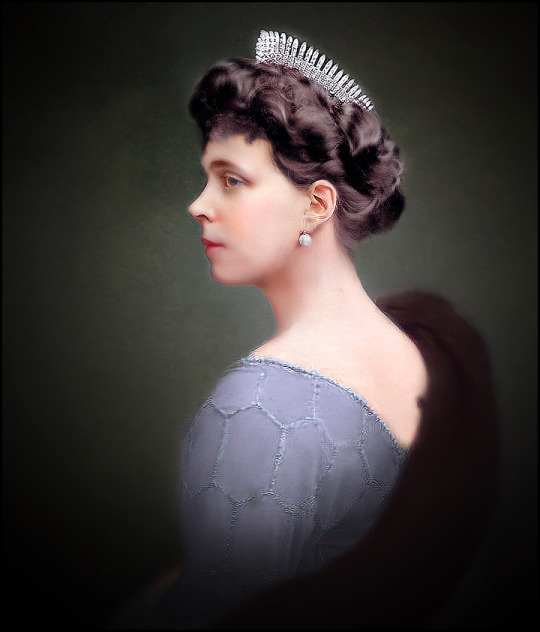
Grand Duchess Elena Vladimirovna of Russia, Princess Nicholas of Greece and Denmark, 1910s.
#Grand Duchess Elena Vladimirovna of Russia#grand duchess elena vladimirovna#grand duchess elena of russia#princess nicholas of greece#romanovs#imperial russia#russian imperial family#imperial family#greek royals#greek royalty#greek royal family#1910s#1910s fashion#colored photography#history colored
23 notes
·
View notes
Text

Prince Nicholas & Grand Duchess Elena
#prince nicholas of greece and denmark#grand duchess elena#princess marina#princess olga#princess elizabeth of greece and denmark
0 notes
Photo
Wonderful dry point work by Nicholas Panagiotti Zarokilli




Greek Princesses (and Romanov descendants), Olga, Elizabeth and Marina and their father Prince Nicholas of Greece and Denmark. They were the daughters of Prince Nicholas of Greece and Grand Duchess Elena Vladimirovna. Their paternal grandparents were King George I of Greece and Queen Olga Konstantinovna. Their maternal grandparents were Grand Duke Vladimir Alexandrovich and Grand Duchess Maria Pavlovna the Elder. During their various periods of exile from Greece, “Greek Nicky” was able to earn money for the family by selling his artwork. Elizabeth and Marina inherited their father’s artistic talent; Marina would sign her work as Marina de Grece or “MG,” and then after her marriage as “MK” for Marina of Kent.
#russian history#romanov dynasty#greek royal family#Greek Nicky#Grand Duchess Elena Vladimirovna#Prince Nicholas of Greece#Nicholas Panagiotti Zarokilli#Princess Olga of Greece#Princess Marina of Greece#Princess Elizabeth of Greece
212 notes
·
View notes
Text

"...Grand Duchess Helene— Princess Nicholas of Greece—was most attractive. She had a typically Russian nose, lovely mysterious eyes of a strange yellowish-hazel, level eyebrows, and a friste, interesting smile, full of passion and melancholy, but strangely charming. She had the same brushed-up ondulé hair as the rest, but her dress was much more chic than most, though all were well made. She said the kindest things about my books and seemed to know them well, which flattered me greatly".
Elinor Glyn "Romantic adventure"
63 notes
·
View notes
Text
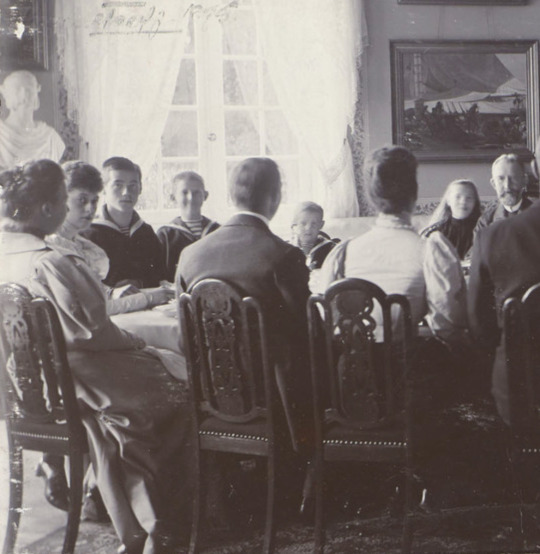
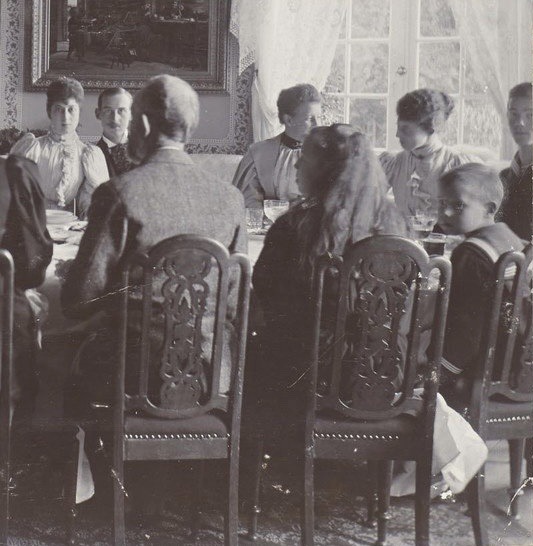
Bernstorff 1895
Princess Victoria of Wales, Grand Duke Mikhail Alexandrovich, Princes Andrew, Christopher of Greece and Denmark, Grand duchess Olga Alexandrovna, Prince Johann of Glocksburg.
on the opposite side
Princess Maud of Wales, Prince Nicholas of Greece and Denmark, Princess Maria of Greece and Denmark.
#princess victoria#mikhail alexandrovich#prince andrew of greece and denmark#olga alexandrovna#johann of Glocksburg#princess maud#nicholas of greece#Maria of Greece#michael alexandrovich#Victoria of Wales#maud of Wales#prince Nicholas of Greece and Denmark#Princess Maria of Greece and Denmark#bernstorff#1895s#russian empire#Romanov#Christopher of Greece#prince christopher of Greece and Denmark
18 notes
·
View notes